These are the twelve endangered animals around the world
Of 8,300 known animal species, 8% are extinct and 22% are endangered. These United Nations figures place the planet on the brink of what some scientists now call "the sixth mass extinction." The impact of human action on ecosystems is causing many species to disappear, with irreversible harm to biodiversity and the environment.

Perhaps many could not imagine that their generation would witness the final disappearance of certain animal and plant species from the Earth as part of what looks to be the sixth mass extinction event to befall our planet. According to research by scientists at the Massachusetts Institute of Technology (MIT), given current carbon emissions, the next mass extinction could occur within 80 years, around the year 2100. What does it depend on? It depends on how soon the ocean absorbs 310 billion tons of carbon.
At present, climate change is the direct cause of decreasing biodiversity (which has declined by 68% since 1970). Further causes include changes in land and sea use, direct exploitation of organisms, pollution and invasive species, as stated in the latest report of the Intergovernmental Science-Policy Platform on Biodiversity and Ecosystem Services (IPBES).
Biodiversity preservation is emerging strongly as a leading concern, and will be key in the sustainability debate, according to BBVA Research's 'Sustainability through the lens of Big Data' report.
This is how earlier mass extinctions happened
Although extinction events have happened on the planet for millions of years, the data show that intervals between extinctions are becoming shorter and shorter while the disappearance of species is advancing relentlessly. The IPBES Chair, Sir Robert Watson, has stated that, "The health of ecosystems on which we and all other species depend is deteriorating more rapidly than ever."
The first mass extinction, also known as the 'Ordovician-Silurian' event, took place 443 million years ago, and lasted at least 500,000 years and possibly a million years. During that period, 86% of the species that existed at the time disappeared. They were mainly marine species. The reason for extinction was glaciation and a concomitant decrease in the oxygen available for survival.
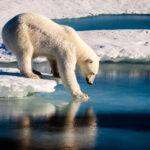
The second, or 'Devonian-Carboniferous', mass extinction came about 367 million years ago. It lasted for three million years, during which time 82% of existing species disappeared. The causes included a proliferation of algae from the emergence of land-based plants that, by turning the soil, released nutrients into the ocean. The algae, by taking oxygen from the water, caused the disappearance of much of marine animal life.
The third mass extinction event took place 251 million years ago. Also known as the Permian-Triassic extinction, the process lasted one million years and led to the disappearance of 96% of species. The reason? Volcanic activity—which, according to scientists, perhaps also contributed to the disappearance of 76% of species during the 'Triassic-Jurassic' event, the fourth mass extinction. That event took place 210 million years ago and lasted a million years.
The fifth mass extinction came about 65 million years ago, and saw the end of the dinosaurs and many other organisms. Also known as the 'Cretaceous-Paleogene' mass extinction, it involved the disappearance of 76% of species. The impact of a large asteroid in the Yucatan Peninsula, Mexico, put an end to the dinosaur era.
Endangered wildlife
IPBES's 2019 Global Assessment Report on Biodiversity and Ecosystem Services notes that more than one million animal and plant species are at risk of extinction over the next few decades. Currently, the International Union for Conservation of Nature's Red List of Threatened Species, a critical indicator of the health of the world's biodiversity comprising assessments of numerous species groups, including mammals, amphibians, birds, reef-building corals and conifers, shows that of nearly 130,000 species, more than 35,500 species are endangered. Of this figure, 40% are amphibians, 34% conifers, 33% reef-building corals, 26% mammals and 14% birds.
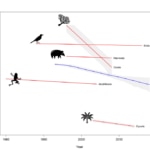
The IUCN Red List of Threatened Species.
Of the total number of species assessed and listed, 78,126 belong to the animal kingdom. Today, 5,278 wildlife species are endangered and 3,395 are critically endangered.
List of endangered animal species
These are 12 of the most endangered wildlife species on Earth that could disappear in the coming years:
-
POLAR BEAR

-
PANDA

-
THE ELEPHANT
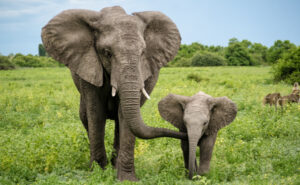
-
THE WHALE
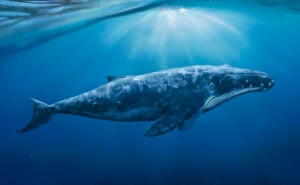
-
THE CHIMPANZEE

-
THE MOUNTAIN GORILLA
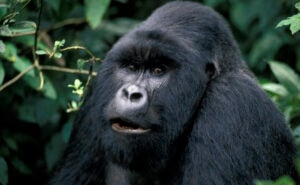
-
THE SNOW LEOPARD
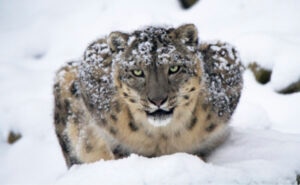
-
THE TIGER OF SUMATRA
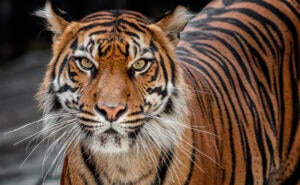
-
THE RHINOCEROS
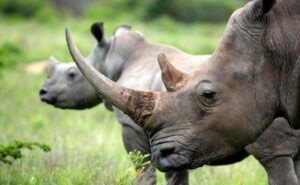
-
THE TURTLES

-
THE FRESH WATER DOLPHIN
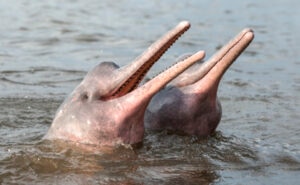
-
THE WHALE SHARK
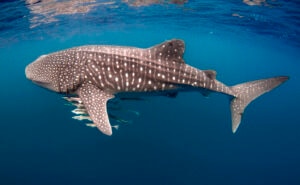
Human action is behind the threat of extinction of these species: poaching of tigers, elephants and rhinoceroses, capture of turtles, and destruction of habitats where species such as chimpanzees, polar bears and pandas live due to the consequences of climate change. Since 1980, greenhouse gas emissions have doubled, raising average global temperatures by at least 0.7 degrees Celsius, causing climate change to affect nature not only at the ecosystem level, but also in terms of species genetics. In the context of the Conference of the Parties to the Convention on Biological Diversity, which in 2021 will lay down new guidelines for the coming decades, some experts have suggested setting a target of fewer than 20 newly extinct species per year.
Despite this, conservation efforts paradoxically also focus on reducing invasive species to ward off the threat they pose to some ecosystems.
United Nations Goal 15: Halt biodiversity loss
Among the 17 Sustainable Development Goals (SDGs) promoted by the United Nations is the SDG concerning life on land, which aims to sustainably manage forests, combat desertification, halt and reverse land degradation and halt biodiversity loss. BBVA is committed to this goal by taking action to protect forests.
What other actions can be taken to sustain ecosystems? There are many small gestures that can lead to major achievements. Recycling, consuming local sustainable products while avoiding food waste, and limiting energy use through efficient heating and cooling systems are some of the recommendations.
Being respectful of wildlife and participating only in ecotourism activities that are organized ethically and responsibly so as not to disturb wildlife is also critical. Suitable management of protected areas is key, as they contribute to healthy ecosystems and, in turn, to people's health.